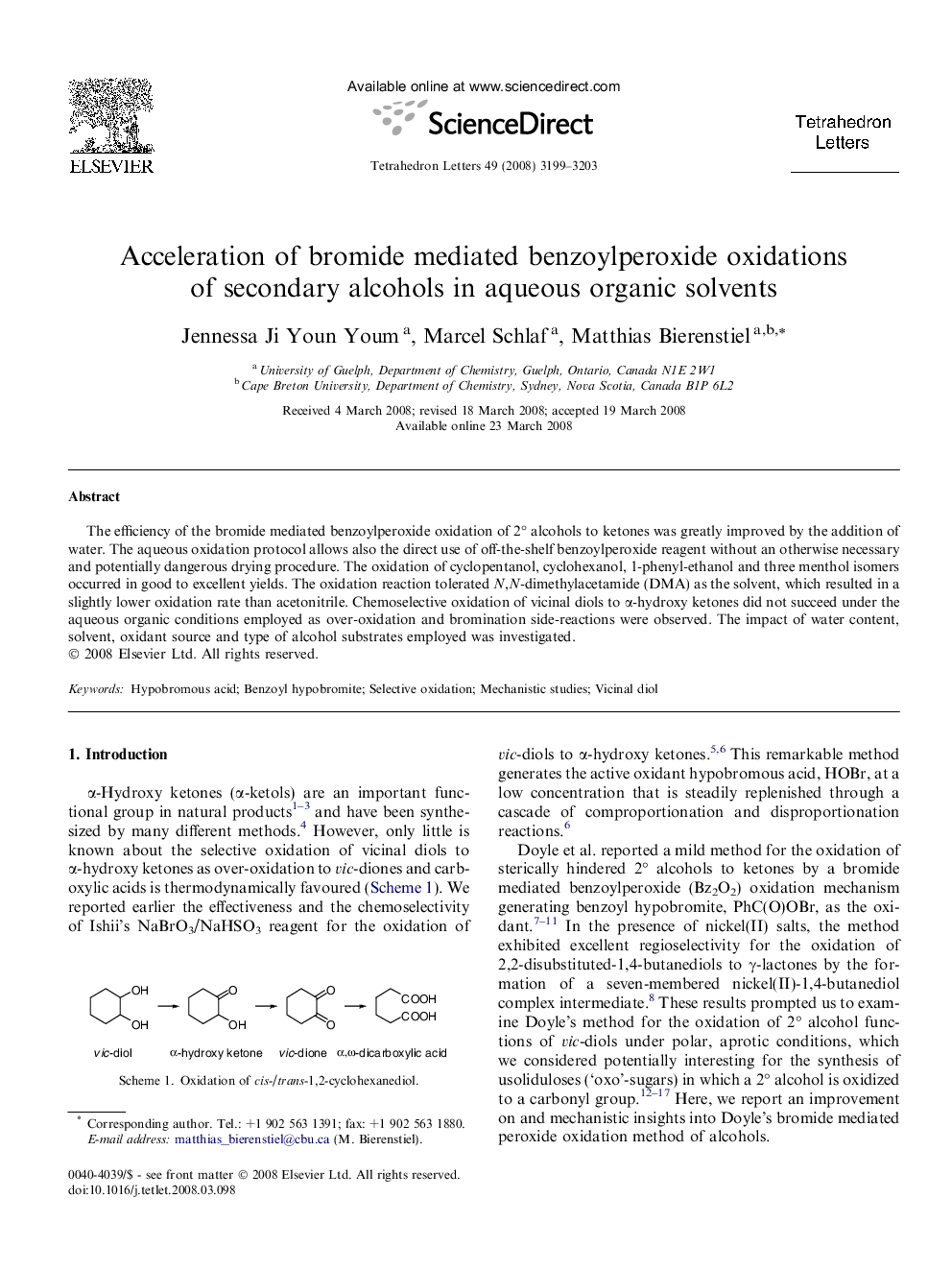| Article ID | Journal | Published Year | Pages | File Type |
|---|---|---|---|---|
| 5281643 | Tetrahedron Letters | 2008 | 5 Pages |
The efficiency of the bromide mediated benzoylperoxide oxidation of 2° alcohols to ketones was greatly improved by the addition of water. The aqueous oxidation protocol allows also the direct use of off-the-shelf benzoylperoxide reagent without an otherwise necessary and potentially dangerous drying procedure. The oxidation of cyclopentanol, cyclohexanol, 1-phenyl-ethanol and three menthol isomers occurred in good to excellent yields. The oxidation reaction tolerated N,N-dimethylacetamide (DMA) as the solvent, which resulted in a slightly lower oxidation rate than acetonitrile. Chemoselective oxidation of vicinal diols to α-hydroxy ketones did not succeed under the aqueous organic conditions employed as over-oxidation and bromination side-reactions were observed. The impact of water content, solvent, oxidant source and type of alcohol substrates employed was investigated.
Graphical abstractThe combination of commercially available wet benzoylperoxide with NiBr2 provides a fast and convenient oxidation reagent for 2° alcohols.Download full-size image
